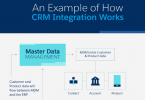Inventory management is one of those critical business operations that remain “behind the scenes” until a pain point happens. Whether that “pain” is an external influence such as government intervention or a natural disaster, or an internal factor such as your business growth exceeding expectations, if you manufacture or sell goods, you have to balance your inventory supply with just-in-time (JIT) inventory strategies and advance preparation. Due to its susceptibility to external influences, managing inventory may never be an exact science, but business owners grappling to maintain a steadfast supply while experiencing rapid growth have options to help.
Photo by Tiger Lily from Pexels
Consider outside help
If inventory management is not within your realm of expertise as a business owner, consider outsourcing it to a reputable third party. You may recoup your outsourcing costs by spending less time and money on space, human resources, and logistics. Remember, it’s not just a lack of inventory due to your rapid growth that can hurt your business; having excess inventory costs you money, too. Outsourcing can be an effective way to maintain your JIT inventory strategy, while also allowing you to focus on your company’s core competencies.
Another outside resource to consider is hiring an inventory consultant. This option can work whether you outsource your inventory management or keep it in-house and in fact, the consultant can help you determine which is the right option for your business. They can help you forecast your necessary inventory, develop a strategy, set shift schedules, and train your staff. Eventually, you should be able to phase out your consultant’s services as they build up your team’s inventory management competencies from within.

Automation isn’t just for large companies anymore
It used to be that “automation” lived exclusively in the language of large manufacturers and distributors. Fortunately, as with most technological advances, technology companies and software developers have found ways to bring the perks of automation to smaller companies without the large-scale enterprise price tag. You should expect to recoup your costs for an automated inventory management system by eliminating human error, using fewer human resources through fewer hires or redirecting existing hires to other critical functions, automatically updating stock once a sale is made, and increasing customer satisfaction.
Another business feature not just for large companies – although not related to automation – is a corporate structure. Incorporating your business can protect you and your personal assets, but corporations can also be onerous for many small- to mid-sized businesses to deal with. A more suitable alternative may be the limited liability company structure or LLC. You’ll find yourself dealing with less paperwork and administrative details than with other corporate structures, freeing you up to take care of more pressing details, like finding your ideal inventory management solution. Be sure to check the regulations in your state on forming an LLC since they vary. While you can form it yourself, or hire an attorney to take care of the formation, remember that both your time and your money are at a premium, so consider an online formation service for LLC help to save on both.
Allow your growth to meet the demand
Business growth is good, but only as long as your customers are satisfied. Meeting their needs through an adequate inventory supply is key to that satisfaction, as well as repeat business. Taking a strategic approach to inventory management so you have neither too little nor too much takes more than just guesswork – and historical references can also be deceiving when trying to forecast future events against future needs. Tackling your inventory management can take the wrinkles out of your fast-growing business when pain points occur, and get you on an even supply chain track.

 Photo by
Photo by 



Leave a Comment